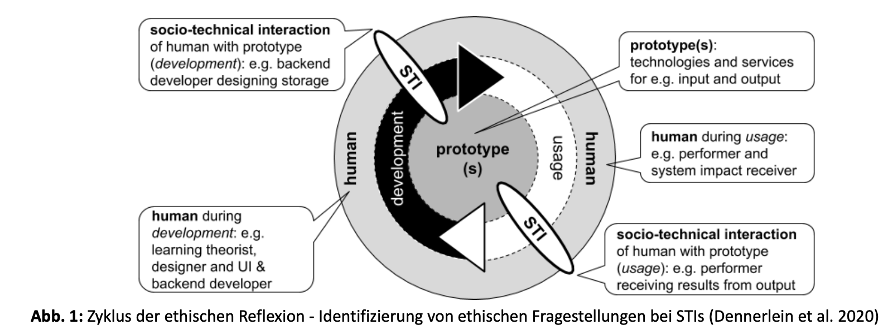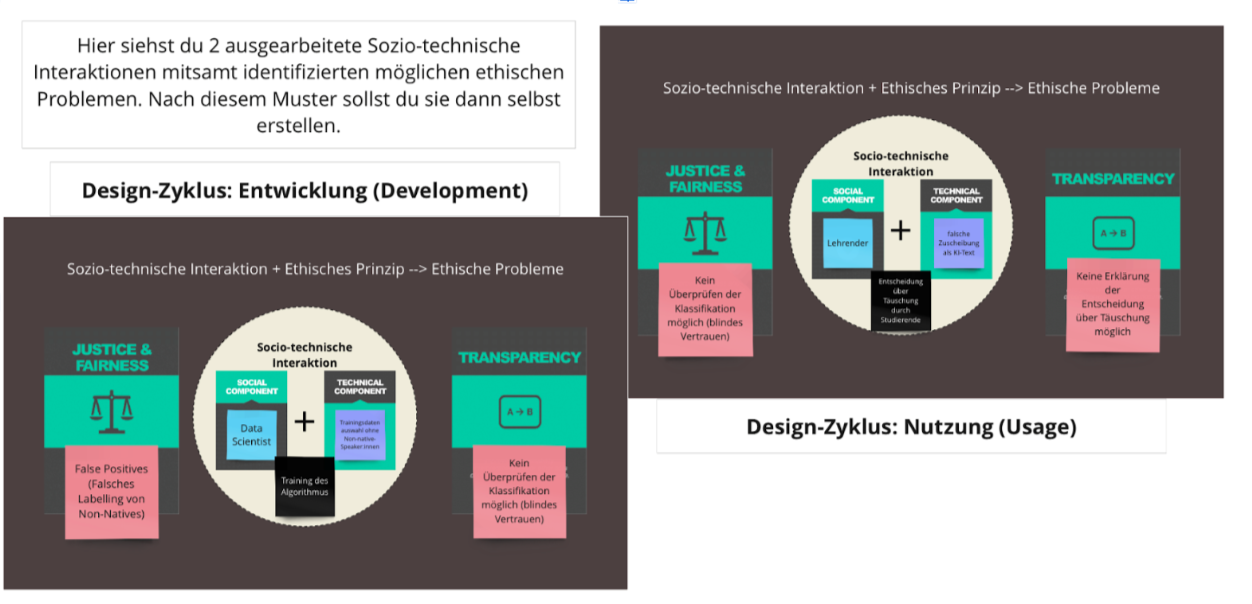The article is relevant to the subject of Ethics in Technology Development, specifically focusing on integrating ethical considerations into the design and use of socio-technical systems. It is also pertinent to fields such as Media Law and Media Ethics, Data Security, Artificial Intelligence Ethics, and Human-Computer Interaction.
The SREP Framework: Ethical Reflection in the Digital Age #
The ethics lessons as part of the "Data security, media law and media ethics" course are anything but frontal teaching. In a world that is increasingly permeated by technology, there is a growing need to place ethical considerations at the centre of innovation and development processes. As a result, Robert Gutounig introduced us to the SREP framework during the media ethics lessons, which he even helped to develop. The handling of data, the use of artificial intelligence and the design of digital products raise questions that go far beyond technical aspects. In order to prepare future innovators for these challenges, the SREP framework represents a promising approach to implementing ethical reflection in the development and advancement of new technologies. Robert went through this ethics workshop with us.
What is the SREP framework?
A socio-technical system is understood to be the entirety of the mutual relationships between humans and technology, so-called socio-technical interactions. This includes both the development and use of technology.
The Socio-technical Reflection of Ethical Principles (SREP) framework provides a structured approach to identifying, discussing, analysing and evaluating ethical issues in the context of socio-technical systems. Developed with the aim of promoting reflection on ethical principles in the development of technologies, SREP focuses on the one hand on the interactions between human actors, such as backend developers, frontend developers, designers, content creators or users. On the other hand, it concentrates on technical components: the selection & cleansing of data, visualisation, system functions, or hardware components.
By stimulating discussions about ethical principles, the framework helps stakeholders of all kinds to think about the implications of their work from different perspectives. Ethical principles are fundamental guidelines or norms that guide the behavior of individuals or organizations. Examples include freedom & autonomy, justice & fairness, trust, privacy or sustainability.
Application of the SREP framework

The SREP framework is typically implemented in development and innovation processes through interactive workshops that guide people from all professions to systematically integrate ethical considerations into their project work. Such a workshop can be structured as follows:
- Introduction: Firstly, participants are introduced to the purpose and target group of the framework. Examples are used to explain how socio-technical interactions can influence ethical principles.
- Presentation of a project: A specific project from the work involving technological development and innovation serves as the starting point for the following ethical reflection.
- Reflection workshop: Working in groups, the participants think through various aspects of the project, taking ethical principles into account. This includes identifying relevant stakeholders such as developers, UX designers, content strategists, and project managers. Furthermore, technological components that will be used in the course of the process will be defined.
Last but not least, there are ethical questions. By formulating questions for reflection and discussing potential ethical problems, participants are encouraged to outline possible solutions and integrate ethical considerations into their projects. The following illustration shows an example from an SREP framework workshop.
The focus is on the interaction between humans and machines. The black card describes the joint task of the human and technical components. Finally, each component has been assigned an ethical principle to be taken from a defined pool. The red cards describe ethical problems that may arise during development.

The final part of the framework is the prioritization of ethical principles.
- How high are the costs that could potentially arise from an ethical problem?
- How easy or difficult is the problem to correct?
- How high is the probability that the problem will occur?
Important: The team must agree on the ranking criteria during this workshop:
- Do you rate from 1 (easy) to 5 (bad), and vice versa or do you want to scale higher?
Once an agreement has been reached and the potential ethical problems have been analysed, the sum of all individual ratings is calculated for each problem. The three biggest ethical risks should then emerge.
The role of the moderator
Facilitators play a central role in the application of the SREP framework by stimulating discussion and supporting participants in the project to reflect. Through the use of reflection triggers and the application of the Socratic dialogue method, participants are encouraged to think deeply about the ethical dimensions of their work. The focus is not on providing fixed answers, but on jointly developing questions and solutions.
Conclusion
The SREP framework offers a valuable approach for firmly anchoring ethical reflection in the development of future technologies and preparing employees for the complex challenges of technological development. By systematically engaging with ethical principles, future innovators are empowered to deal responsibly with the impact of their work and make a positive contribution to shaping a fair and sustainable future.
Where to go from here #
Find out more about the Master's programme in Content Strategy and learn more about ethical frameworks in the world of media and innovation.
References #
Dennerlein, S., Wolf-Brenner, C., Gutounig, R., Schweiger, S., & Pammer-Schindler, V. (2020). Guiding Socio-Technical Reflection of Ethical Principles in TEL Software Development: The SREP Framework. In C. Alario-Hoyos, M. J. Rodríguez-Triana, M. Scheffel, I. Arnedillo-Sánchez, & S.M. Dennerlein (Hrsg.), Addressing Global Challenges and Quality Education (S. 386–391). Springer International Publishing. https://doi.org/10.1007/978-3-030-57717-9_32
Dennerlein, S., Gutounig, R., Ritschl, H., & Wolf-Brenner, C. (2021). Fächerübergreifende soziotechnische Reflexion von ethischen Grundsätzen Ein Vorschlag zur Umsetzung in der Hochschullehre. https://cdn.fh-joanneum.at/media/2021/12/Didaktisches-Konzept_TA-PLUS-2021_4er-Team.pdf
The SREP Framework is part of the lecture on media ethics, which in turn is part of the course Data Security, Media Law & Media Ethics. The course will be held in the fourth semester.

